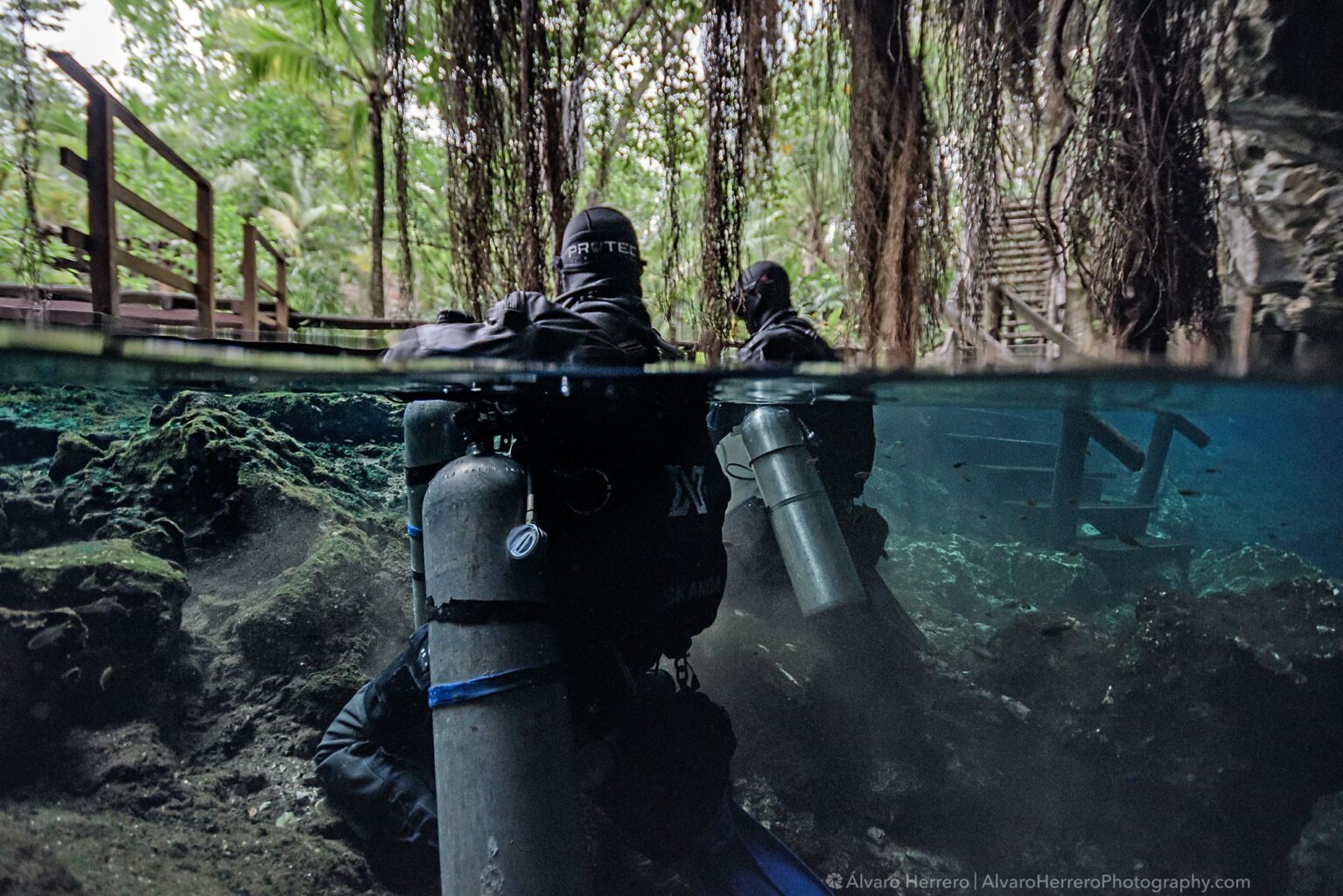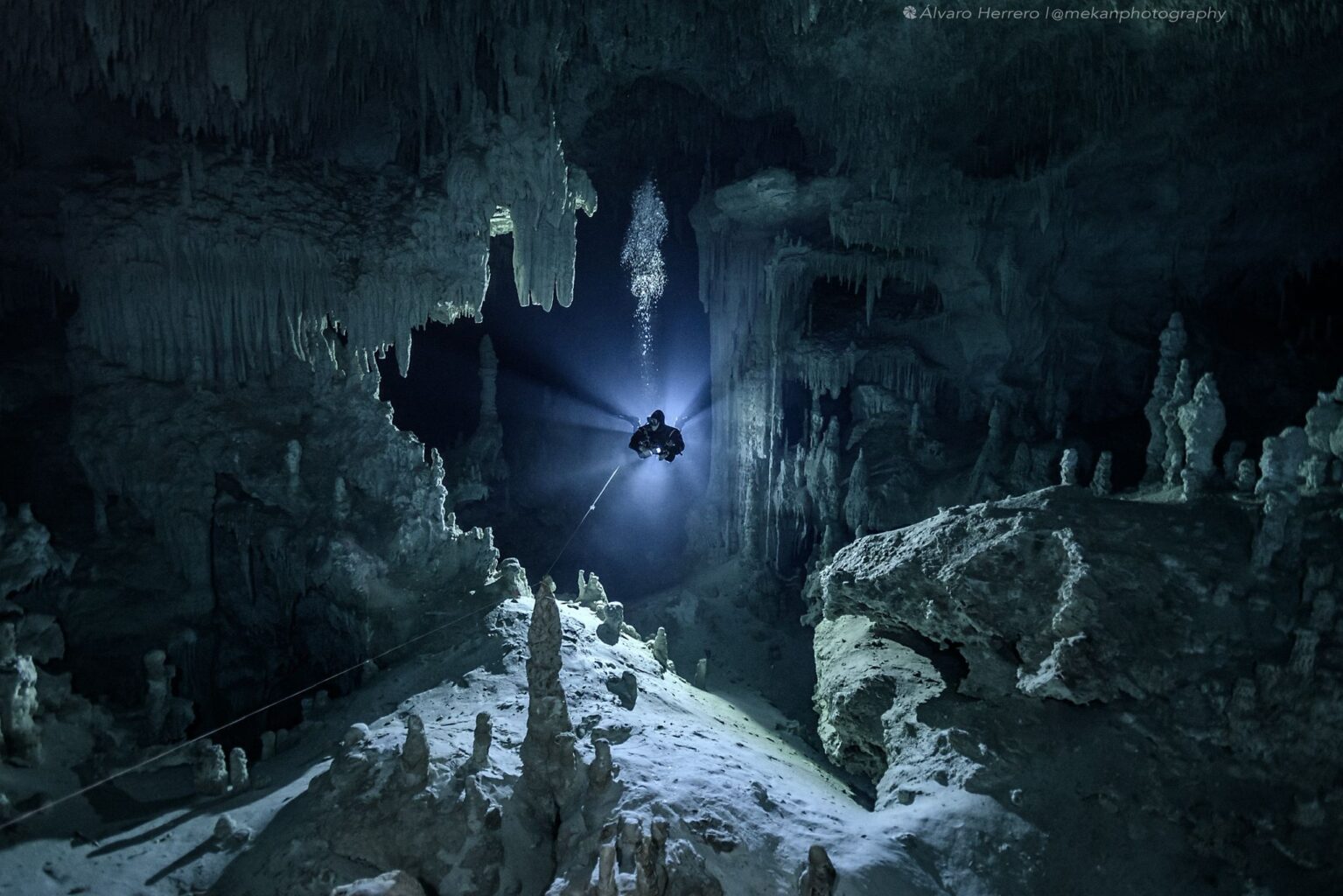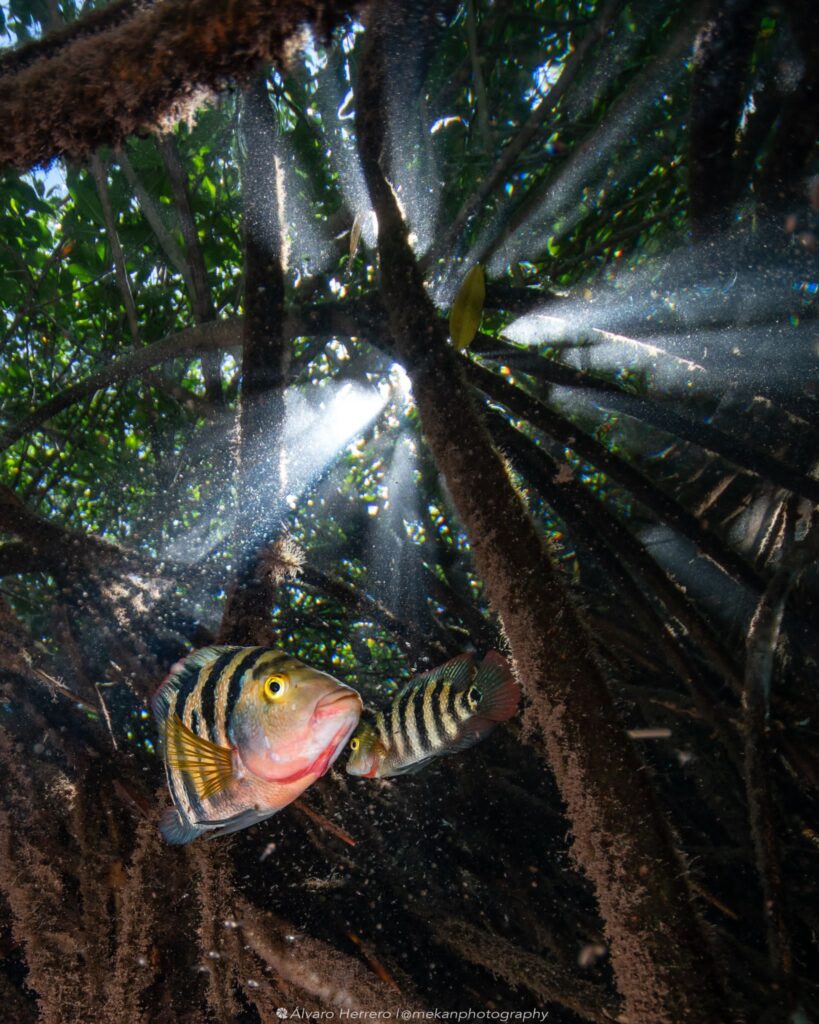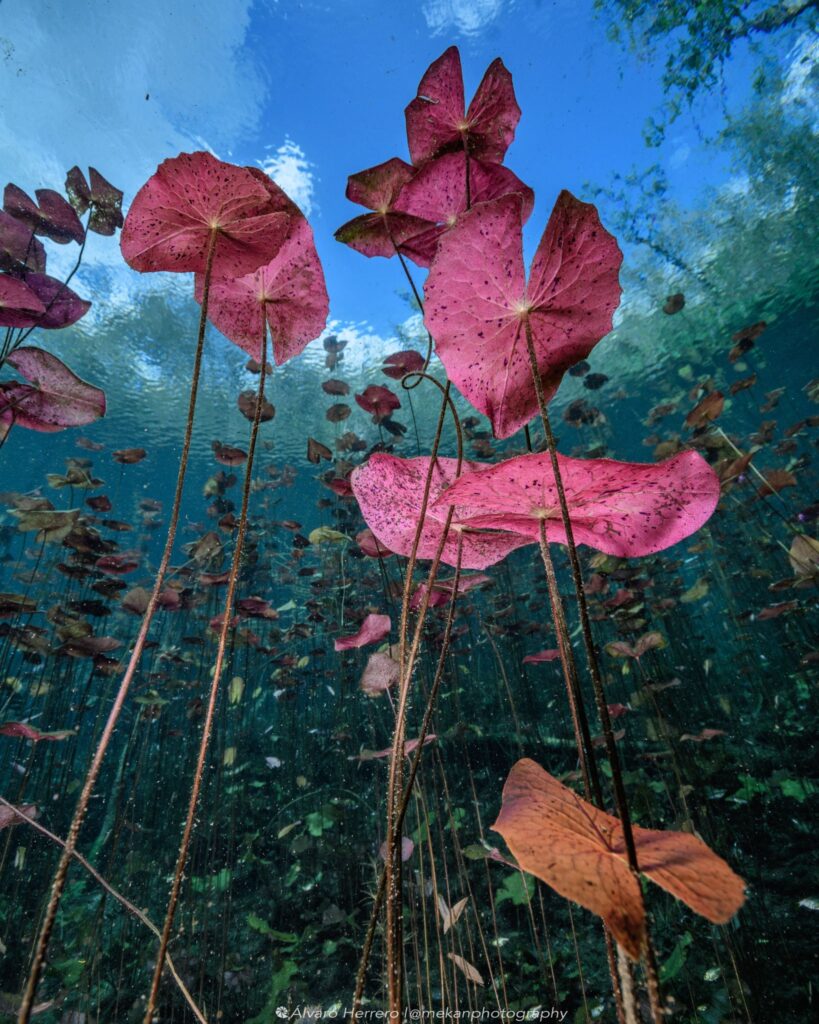The motivation for writing this article was my recent conversation with David Mayor, a well-known explorer, cave diver and instructor in the area. We met at a dive site and started a casual talk, exchanging recent news and experiences. As everyone else working in the area, I knew that cenote Tajma Ha was closed to the public, so I asked him if he had any idea when it’s going to reopen. And in response, he showed me pictures and shared facts that, along with my own recent experiences, turned into this write-up.

For those of you who are not familiar with Tajma Ha – it’s a cenote and the main entrance to the eponymous cave system, located in the Xpuha area. It is popular for cavern diving, cave diving and training alike. It holds a special place in my heart (along with a few other caves) because like many of you, this was one the first caves I’ve ever dived in after my training. Chinese Garden and Waterfall are, to this day, among my all-time favorite dives.

Now, as you can see on the pictures, a big construction has started in the area, specifically around the cenote Mangrovia, which is just 200m from the road to Taj. It has already harmed a part of the cave system, not to mention Cenote Mangrovia itself. From the latest information after the dives, done by David and his teammates, low visibility due to dredged sediment has drifted 460m down the cave to Cenote Twin Set, which is a part of the same cave system. From what can be seen on pictures taken with a drone, further construction is going on, destroying other cenotes around.

Unfortunately, Tajma Ha is not the only cenote damaged by an ongoing construction process. Big projects, such as the Mayan Train, and smaller ones, like building residential areas and resort development have affected a lot of the caves in the region.
Diving in Nohoch Nah Chich, one of the most popular and beautiful caves in the area, wasn’t a pleasant experience lately. I believe that cave divers can recognize the place from the pictures:

A couple months ago for the first time I encountered such low visibility in the cave that I had to turn our dive for safety reasons. Not to mention loud noises, coming from the construction on top, to the point where I could feel the vibration around. That was the first time that I ever felt unsafe in a cave, wanting to check the ceiling for cracks (which was not possible in such a low viz.). As other divers reported, the visibility had shifted between normal and very low over the last few months, depending on the progress of the construction.

It doesn’t end there. Videos of concrete pillars going through stalactites that are circulating online are equally terrifying and depressing. Drilling thousands of holes and inserting concrete-filled metal columns to support things such as the train, not only harms the aquifer but causes permanent damage, damaging all the cave systems of the region. Looking at it, I can’t help thinking: why is humankind so fast to destroy beauty? Can we do any better? It took thousands of years for caves to form and just a second for humans to ruin it.
As instructors and guides, our priority is always cave conservation – this is what we teach and educate our divers on. Caves and karst windows are useful natural resources in México, as attested by thousands of scientific papers and books. Mexico has about 800 various cave species (troglobitic species), invertebrates and cave fishes that are important in scientific research. * It also holds historical and cultural value. Here are just brief examples of the ecosystem we are talking about:


All of the above are just dry words for those who don’t spend their days underwater and haven’t dedicated years to cave diving.
To me, caves are more than just a valuable ecosystem that should be protected, it’s also my “happy place” and the reason I first moved to Mexico almost 10 years ago now. I know for a fact, that I’m not the only one who feels this way. Even looking at the international team around me: we all moved here for the unique experience of cave diving and it is sad to see that some of our favorite places are affected by constructions and development.
I realize that it is a part of regional economic growth, but also think that we could try to draw more attention to the problem. Understanding the beauty and vulnerability of the caves may help those involved to make better decisions.
For almost 5 years Somos los Cenotes has been spreading the word, educating people on the Mexican caves and hazards they are facing. I’d like to thank Philip Lehman for sharing his thoughts on the topic and supporting cave conservation in the smartest way possible. I totally agree with his idea of attracting as many cave divers as possible, to spread the information and knowledge about the caves worldwide. After all, no one would care about the Mona Lisa, and it wouldn’t be the most protected painting in the world if it was just a picture by an unknown artist hanging on the wall in someone’s apartment where no one can truly understand its value.
Fame and tons of information on a subject is what makes it valuable even in the eyes of those who don’t care about art at all. It’s easy to destroy things people don’t care about.
Just like the Mona Lisa, the caves and their formations can never be replicated and deserve more respect and care.
Photos by @mekanphotography, photos from Taj area provided by Elias and David.
*(“Human impacts on Mexican caves” by William R. Elliot, Jose G. Palacios-Vargas, Rodrigo A. Medellin, Omar Calva. In book: Mexican Fauna in the Anthropocene (pp.377-414).
